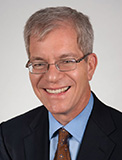The New QDDR Offers Hope
President's Views
BY ROBERT J. SILVERMAN

Early summertime lulls us with expectations of a more relaxed, contemplative period ahead. But summer is also a time for preparations of all kinds. In the spirit of preparing for policy reforms, let’s talk about the 2014 Quadrennial Diplomacy and Development Review.
Are you still conscious and focused? I, too, used to feel a certain ennui about the State Department’s strategic planning exercises. Too often they lacked operational relevance for those of us in the field or in line offices in Washington.
The 2010 QDDR created some new senior positions in Washington and moved existing offices under new boxes on the organizational chart, thus adding to the top-heavy nature of the State bureaucracy.
The 2010 QDDR process elevated the priority of “engaging beyond the state,” expanding our relations with civil society and local publics.
This was a good idea, but again was not translated into much of practical value to the career staff.
The new QDDR process, launched this spring, offers hope. First, the new team in charge has many years of experience in the federal government and NGO community, so it knows how to link grand strategic objectives to programs and budgets. Second, the time constraint it faces in implementing a QDDR in the last two years of an administration will help it focus on concrete measures in discrete areas of our work.
So AFSA decided to fully engage. Please read the seven papers drafted by working groups of AFSA members and given to the QDDR team at State (and posted at www.afsa.org/qddr). The papers include a few controversial recommendations.
Vision without execution is hallucination.
—Thomas Edison
If you feel strongly about any of the issues addressed, my advice is to form a working group of like-minded AFSA members and write a new paper. AFSA’s Governing Board will review it and decide whether to pass it to State and publicize it.
The main intent of the AFSA papers is to elicit interest in the new QDDR as a vehicle for reform, and to help focus the QDDR team on concrete reforms of concern to our members. Several common themes emerge in the papers. One is a desire to push down the policy process at State to the action offices in the regional and functional bureaus, which entails paring back the number of seventh-floor envoys and other positions.
Another is to empower our folks in the field by improving and expanding FSI training needed to equip them and by protecting their ability to make security decisions.
Here are some teasers from the papers:
- Technology: It is time to fundamentally rethink our relationship to IT platforms and personnel and focus on IT personnel as enablers and multipliers rather than just as the ‘computer, pouch, or radio’ people of the Foreign Service.
- Public Diplomacy: The practice of staffing R family leadership positions with political appointees, with their shorter time horizons and focus on domestic effects, has not fostered long-term strategic planning and has delayed innovation. Program priorities for overseas posts should derive from each mission’s plans, not from generic Washington mandates. Ambassadors and country teams are best positioned to integrate public diplomacy priorities into their overall mission objectives.
- Economic Prosperity and Development: Economic and development policy should be used to advance other foreign policy goals; economic policy must be an integral part of policy decision-making in all bureaus. State economic and USAID officers should have career tracks that allow them to progress to senior leadership positions in Washington and ambassadorial positions abroad, which will season the policy process with influence from those with senior field experience.
Be well, stay safe and keep in touch,

